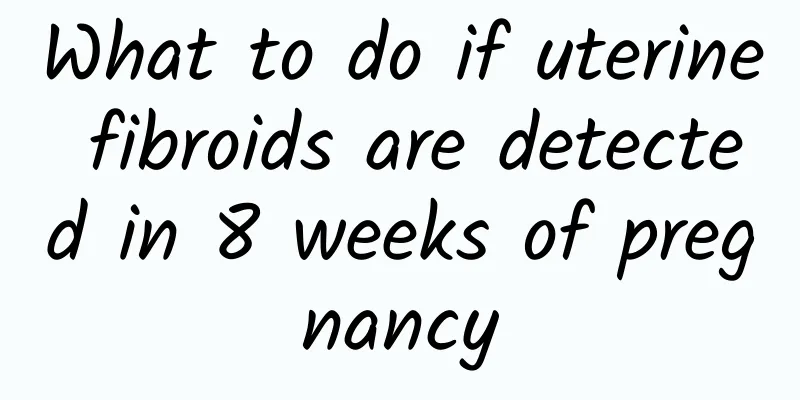How do you get a Bartholin's gland cyst?

|
Bartholin's gland cyst is usually caused by the blockage of the Bartholin's gland duct, which may be caused by infection, inflammation, trauma, etc. It mainly manifests as a lump on one side of the vaginal opening, accompanied by tenderness or discomfort. After diagnosis, it can be treated with medication, surgery or daily care. 1. Catheter obstruction caused by infection Bacterial infection is an important cause of Bartholin's gland cysts, especially when microorganisms such as Escherichia coli and Staphylococcus aureus invade the Bartholin's glands, they can easily cause an inflammatory response, leading to duct obstruction and cyst formation. The risk of bacterial infection is related to personal hygiene habits, sexual behavior, etc. Preventive measures include keeping the vulva clean and avoiding frequent unsafe sexual behavior. Once the infection is serious, antibiotics can be used for treatment, such as cephalosporins, or antibiotics targeting specific bacteria can be used under the guidance of a doctor. 2. Trauma or mechanical stimulation Excessive friction of the vulva and postpartum vulvar injury can easily damage the Bartholin's gland duct, eventually causing mechanical blockage. Such damage may come from improper use of sanitary products, excessive exercise, etc. In such cases, recurrence can be reduced by avoiding re-stimulation. At the same time, for those with mild swelling or discomfort, warm water sitz baths can be tried to relieve it, such as twice a day, each time for about 15 minutes. 3. Spread of inflammation or accumulation of secretions Chronic inflammation may be caused by the spread of infection from the vagina, urethra, or other surrounding tissues. When secretions increase and are not cleaned for a long time, the catheter opening may be blocked and cysts may form. In such cases, it is necessary to see a doctor in time to check whether there is an underlying reproductive tract infection and treat the root cause, such as using metronidazole to control anaerobic infection. 4. Treatment and care methods Treatment depends on the size of the cyst and the severity of your symptoms. If the cyst is small and asymptomatic, observation is usually recommended; if the cyst is large or painful, further surgery may be needed: Drug treatment: Antibiotics are used to control inflammation and infection; pain relievers can relieve tenderness. Drainage: For larger cysts with obvious symptoms, incision and drainage can be performed to relieve local pressure. Ductostomy or Bartholin's gland removal: For patients with recurrent or worsening cysts, your doctor may recommend surgery to permanently resolve the problem. If you feel local discomfort, go to the obstetrics and gynecology department of a regular hospital for diagnosis as soon as possible so that scientific treatment methods can be taken in time. Paying attention to daily cleaning and avoiding unsafe sexual behavior will not only help prevent Bartholin's gland cysts, but also help protect overall reproductive health. |
<<: What foods should not be eaten with adenomyosis
>>: What are the causes of cervical erosion?
Recommend
Patients with amenorrhea should undergo uterine examination and ovarian function examination
Amenorrhea can lead to female infertility. Patien...
Stretching helps you lose weight! Forward bending stretching method to beautify and slim the body
When it comes to stretching exercises, most peopl...
Experts point out that the common symptoms of ovarian cysts are mainly the following
Ovarian cysts are a common disease among women, s...
Can I get pregnant naturally with adenomyosis?
The presence of adenomyosis has a great impact on...
Women should seriously understand how to care for vulvar leukoplakia in daily life
Various female gynecological diseases are endange...
Too fat to breathe? Gastric bypass surgery to lose weight and survive
Losing weight can not only get rid of excess fat,...
Potential complications of cervical precancer
Cervical precancerous lesions, a scary word, are ...
Smoking and drinking are important measures to prevent ectopic pregnancy
The cause of ectopic pregnancy is largely related...
What is biochemical abortion and what are the characteristics of biochemical pregnancy?
Many women experience bleeding after pregnancy an...
How to eat well when you have bacterial vaginosis
Bacterial vaginosis brings some inconvenience to ...
Can vaginal candidiasis grow in the vagina?
Can vaginal candidiasis grow in the vagina? 1. Ca...
Pelvic inflammatory disease has many causes and treatment needs to be early
Pelvic inflammatory disease is a common gynecolog...
Common symptoms of chronic cervicitis
Chronic cervicitis is a common gynecological dise...
Exploring the causes of vulvar leukoplakia in women
If there are white spots on the vulva, it is very...
Is uterine cyst serious? What are the dangers?
Whether a uterine cyst is serious depends mainly ...









